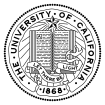
Memorial Gymnasium is a multi-purpose facility located in Nashville, Tennessee. Usually called Memorial Gym or simply Memorial, the building is located on the western side of the Vanderbilt University campus. It was built in 1952 and currently has a seating capacity of 14,326. It serves as home court for the school's men's and women's basketball programs, and will also serve as the home of Vanderbilt's upcoming women's volleyball program, scheduled to begin play in 2025.

The Walter A. Haas Jr. Pavilion is an indoor arena on the campus of the University of California in Berkeley. It is the home venue of the Golden Bears men's and women's basketball, women's volleyball, and men's and women's gymnastics teams. The arena is located in the middle of the main sports complex, overlooking Evans Diamond (baseball) and Edwards Stadium (track/soccer).

Welsh–Ryan Arena is a 7,039-seat multi-purpose arena in Evanston, Illinois, United States, near the campus of Northwestern University. It is home to four Northwestern Wildcats athletic teams: men's basketball, women's basketball, women's volleyball, and wrestling. It is located inside McGaw Memorial Hall, to the north of the site of the former Ryan Field.
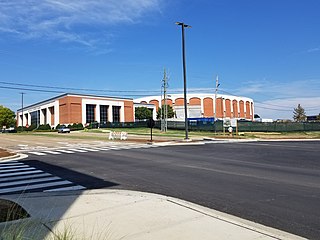
Humphrey Coliseum is a 9,100-seat multi-purpose arena located on the campus of Mississippi State University, just outside Starkville, Mississippi, that opened for the 1975-76 basketball season. Nicknamed The Hump, it is home to the Mississippi State Bulldogs men's and women's basketball teams. It is the largest on-campus basketball arena in the state of Mississippi. The building is the equivalent of seven stories high and is in the shape of an oval 318' long by 268' wide.

Dale F. Halton Arena at the James H. Barnhardt Student Activity Center is an indoor sports venue located on the main campus of UNC Charlotte in Charlotte, North Carolina in the United States of America. It is the home venue of the Charlotte 49ers men's and women's basketball teams and volleyball team. Halton Arena was named for the former president and CEO of Pepsi-Cola Bottling Company of Charlotte. She was a benefactress to the university and served on the university's board of trustees. The building was funded entirely through private donations and student fees.

Donald W. Reynolds Center is an 8,355-seat multi-purpose arena in Tulsa, Oklahoma. Designed by HOK Sport, the arena opened in 1998 and is named for Donald W. Reynolds. Located on the University of Tulsa campus, it is home to the Golden Hurricane basketball and volleyball teams.

The Walter Pyramid, formerly known as The Long Beach Pyramid, is a 4,000-seat, pyramid-shaped indoor multi-purpose arena on the campus of Long Beach State University in Long Beach, California.

Alumni Arena is a multi-purpose arena in Amherst, New York. The arena is home to the State University of New York at Buffalo men's and women's basketball teams, the women's volleyball team, and wrestling team. The facility has a capacity of 6,783 people for basketball games.

Avron B. Fogelman Arena in Devlin Fieldhouse is a 4,100-seat, multi-purpose arena built in 1933 on Tulane University's Uptown campus in New Orleans, Louisiana. Since its opening, it has been home to the Tulane Green Wave men's and women's basketball teams and the women's volleyball team. Devlin is the 9th-oldest continuously active basketball venue in the nation.
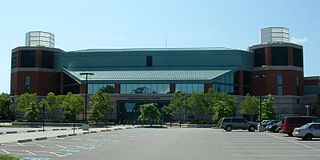
Ryan Center is an 8,000-seat multi-purpose arena in Kingston, Rhode Island, United States. The arena opened as a replacement for Keaney Gymnasium, which was built in 1953 for the needs of a much smaller student population at URI. It is home to the University of Rhode Island Rams basketball. The building is named for Thomas M. Ryan, Class of 1975, former CEO of Rhode Island–based CVS Pharmacy and lead benefactor of the arena.
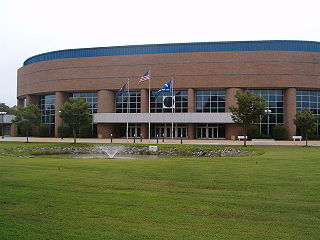
Hampton Convocation Center is a 7,200-seat multi-purpose arena in Hampton, Virginia. It was built in 1993 and is home to the Hampton University Pirates basketball team. The arena replaced Holland Hall gymnasium, which holds women's volleyball matches and tournaments. The construction cost was about $4 million–$5 million.
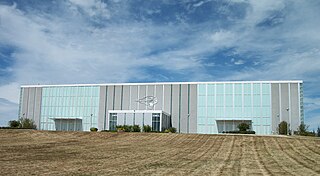
The McLeod Center is a 7,018-seat multi-purpose arena on the campus of the University of Northern Iowa (UNI) in Cedar Falls, Iowa, USA, currently housing the university's teams in men's and women's basketball, and women's volleyball. The arena opened on November 18, 2006, with a volleyball game against Bradley. The other three UNI teams made their debuts in the facility over the next three days — men's basketball versus Milwaukee on November 19, women's basketball against Iowa State on November 20, and wrestling versus Iowa on November 21.

Walsh Gymnasium is a multi-purpose arena in South Orange, New Jersey on the campus of Seton Hall University. The arena opened in 1941 and can seat 1,316 people. It was home to the Seton Hall Pirates men's basketball team before they moved to the Meadowlands in 1985 and then Prudential Center in 2007. Currently, the arena hosts the women's basketball and volleyball teams, but continues to host men's basketball for preseason exhibitions, postseason invitational games such as early rounds of the NIT, and occasionally a regular season non-conference game if there is a conflict with Prudential Center's event schedule. The building is part of the Richie Regan Recreation & Athletic Center, and, like the school's main library, is named for Rev. Thomas J. Walsh, fifth bishop of Newark and former President of the Board of Trustees.

The Alfred Lawson Jr. Multipurpose Center and Teaching Gymnasium is a 9,639-seat multi-purpose arena in Tallahassee, Florida on the Campus of Florida A&M University. It was built in 2009 and it is home to the Florida A&M men's and women's basketball teams and women's volleyball team. The arena replaced Jake Gaither Gymnasium, which is a 3,365-seat multi-purpose arena. The Al Lawson Center is the second biggest arena in Tallahassee, behind the 12,500-seat Donald L. Tucker Civic Center. The official ribbon cutting ceremony was April 8, 2009.

War Memorial Gymnasium is a 2,500-seat multi-purpose indoor arena in the northwest United States, on the campus of the University of Idaho in Moscow, Idaho. Opened 96 years ago in November 1928, the venue honors state residents who gave their lives in the service of their country in World War I.

The Waterman Gymnasium was the first on-campus gymnasium at the University of Michigan in Ann Arbor, Michigan. The building was the first home of the Michigan Wolverines men's basketball team. The building stood at the corner of North University Avenue and East University Avenue, at the northeast corner of the original campus.

Wills Gymnasium, often referred to as Wills Gym, was a multi-purpose athletic facility on the campus of Kent State University in Kent, Ohio, United States. Construction started in 1924 and the building was dedicated in 1925. It was the first dedicated gymnasium on the KSU campus, which had opened in 1913. Before the opening of Wills Gym, physical education classes and the intercollegiate and intramural sports teams used a variety of spaces for games and classes, both on campus in other buildings and off campus. The main gym seated approximately 4,000 people and the basement level included an indoor pool, locker rooms, and bowling alley. At the time, its capacity made it one of the largest facilities in the region. The building served as the primary home of the university's athletic teams and physical education department until 1950, when the Men's Physical Education Building opened. Wills Gym was the first permanent home of the Kent State Golden Flashes men's basketball team, and was also the original home venue for wrestling, men's swimming, men's and women's gymnastics, women's volleyball, and women's basketball.
Memorial Hall was an on-campus athletics building on the campus of the University of Akron in Akron, Ohio. The 33,000-square-foot (3,100 m2) building was the first to be built during the tenure of Norman P. Auburn, Akron's 10th president, and the first to be built beyond the original Butchel College lands. Memorial Hall was open for the start of the 1954–55 school year, and was dedicated on December 11, 1954, in honor of the 1,534 Summit County residents who lost their lives in World War II. The building replaced Crouse Gymnasium, built in 1888 and the oldest building on campus at the time, as the home for physical education. It also served as the new home of the men's basketball team, allowing them to host home games on campus again. The team had moved out of Crouse Gymnasium, which had seating for only a few hundred fans, in the 1920s to the larger off-campus Akron Armory.
The Weaver Gymnasium, formally known as the Weaver Health Building, is an on-campus gymnasium on the campus of Eastern Kentucky University in Richmond, Kentucky. It was opened in 1931 and was named for Charles F. Weaver who served for twelve years on EKU's Board of Regents and established two of the first financial awards at EKU. The building, which houses a pool, gymnasium and dance studios, was the third home of the Eastern Kentucky Colonels men's basketball team, replacing a building known as "The Barn." During their time in Weaver, the Maroons had a record of 225–51 overall and reached the NAIA Men's Basketball Championships twice, in 1945 and 1946, and the 1953 and 1959 NCAA tournament, as well as winning two regular season Ohio Valley Conference titles and two conference tournaments. The last Maroons game held in Weaver was a 96–78 loss to the Louisville Cardinals. The building was replaced in 1963 with the Alumni Coliseum, with a revenge win against the same Cardinals. The building now serves as a site for campus fitness and recreation.
Alumni Gymnasium, or Alumni Gym, was a multipurpose athletic complex on the Worcester Polytechnic Institute (WPI) campus in Worcester, MA. The gym had an indoor track, a basketball court, a swimming pool, a fitness center, a bowling alley, locker rooms, and athletic offices. The gym was closed in 2012 when the Institute opened a new recreation center. In 2016, with the approval of the Worcester Historical Commission, the 100-year-old building was razed to make way for the Foisie Innovation Studio.


















